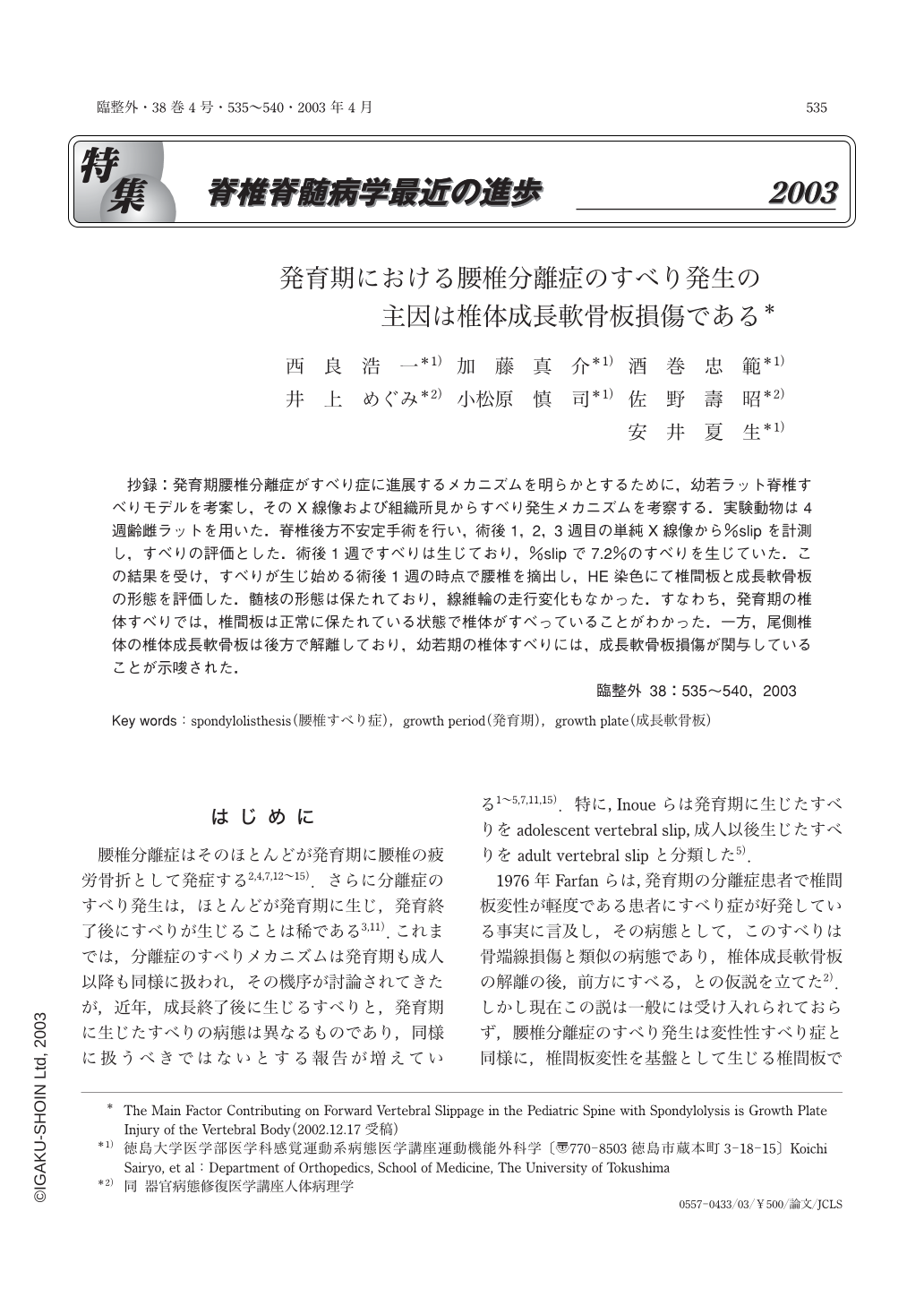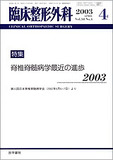Japanese
English
- 有料閲覧
- Abstract 文献概要
- 1ページ目 Look Inside
抄録:発育期腰椎分離症がすべり症に進展するメカニズムを明らかとするために,幼若ラット脊椎すべりモデルを考案し,そのX線像および組織所見からすべり発生メカニズムを考察する.実験動物は4週齢雌ラットを用いた.脊椎後方不安定手術を行い,術後1,2,3週目の単純X線像から%slipを計測し,すべりの評価とした.術後1週ですべりは生じており,%slipで7.2%のすべりを生じていた.この結果を受け,すべりが生じ始める術後1週の時点で腰椎を摘出し,HE染色にて椎間板と成長軟骨板の形態を評価した.髄核の形態は保たれており,線維輪の走行変化もなかった.すなわち,発育期の椎体すべりでは,椎間板は正常に保たれている状態で椎体がすべっていることがわかった.一方,尾側椎体の椎体成長軟骨板は後方で解離しており,幼若期の椎体すべりには,成長軟骨板損傷が関与していることが示唆された.
To clarify the pathogenesis of slippage in pediatric patients with spondylolysis, we created a new rat model that mimics the radiographical features of the patients,and in this paper we discuss its pathogenesis based on a histological analysis of the model. Ten 4-week-old rats were used, five for the radiological analysis and five for the histological analysis. Posterior destabilizing surgery was performed, and weekly lateral view radiographs were taken to evaluate slippage and deformities. Percent slip (%slip) and lumbar index (LI) were calculated as an indicator of slippage and deformity, respectively. Hematoxylin and eosin stained sections prepared one week after the surgery were used for the histological evaluation. Radiographically, slippage was observed as early as one week after surgery, and the %slip was approximately 10%. The LI decreased with time, indicating that a wedging deformity had developed after surgery. These radiological findings in the rat model were similar to those observed in pediatric patients, showing that the rat model in this study was suitable for studying the pathogenesis of pediatric spondylolisthesis. Histological evaluation one week after surgery revealed epiphyseal separation in the vertebral body and an intact intervertebral disc. These results demonstrated that the main factor contributing to vertebral forward slippage in the pediatric spine with spondylolysis is injury of the growth plate of the vertebral body and not disc degeneration.

Copyright © 2003, Igaku-Shoin Ltd. All rights reserved.


